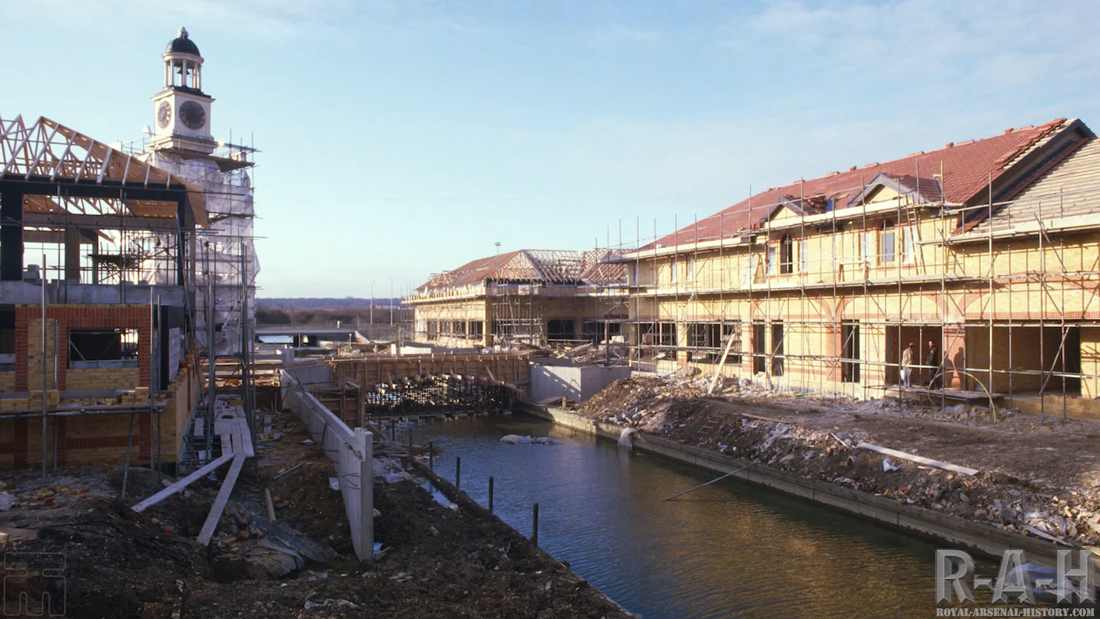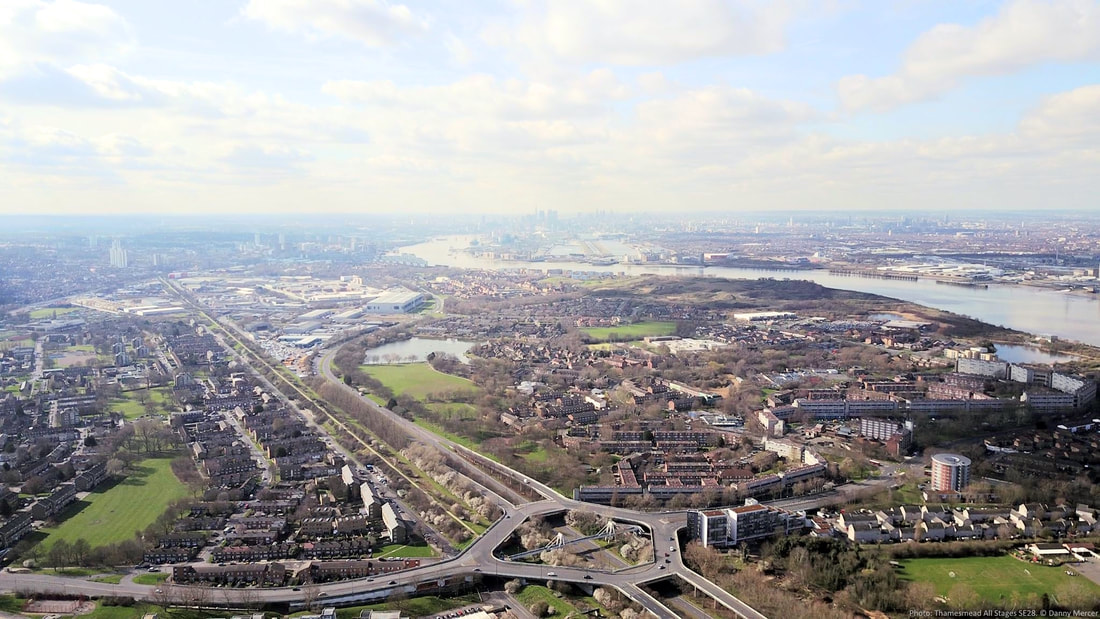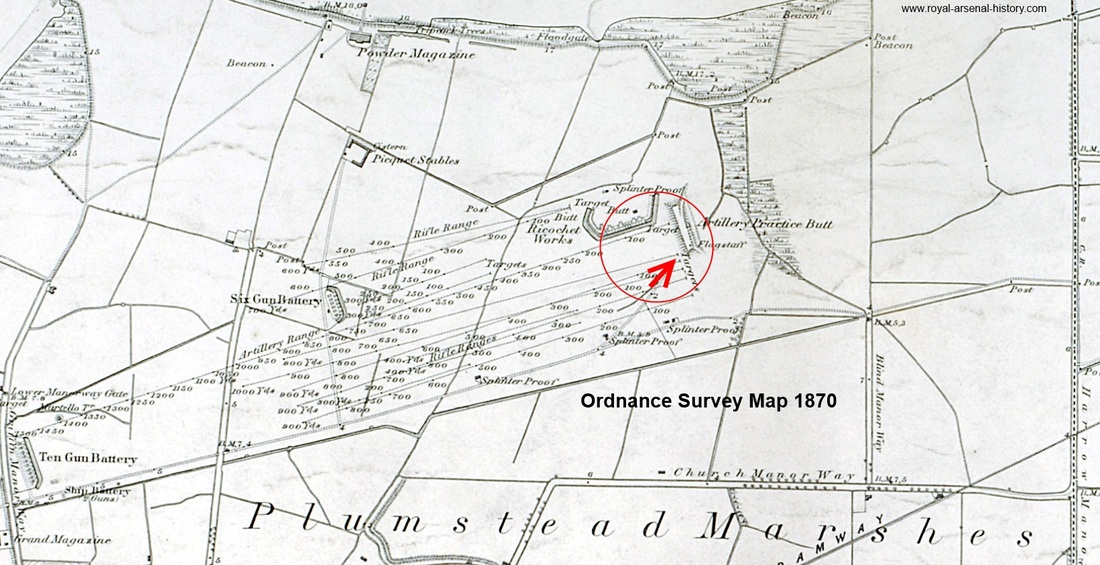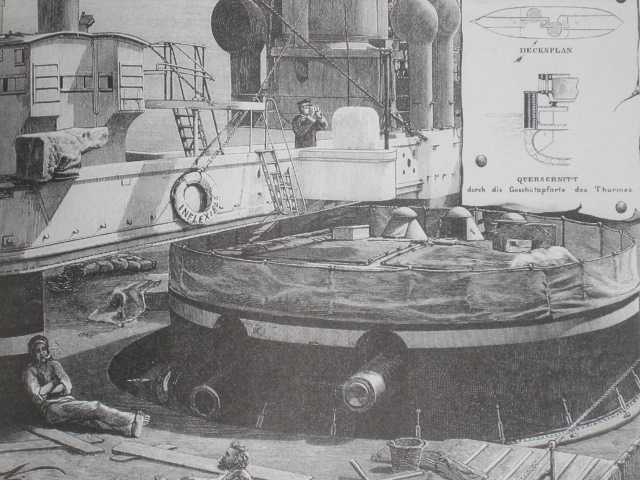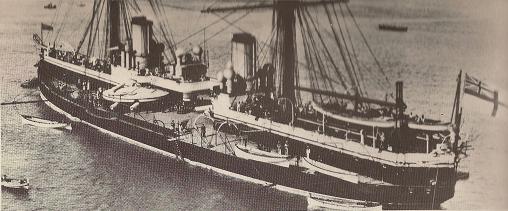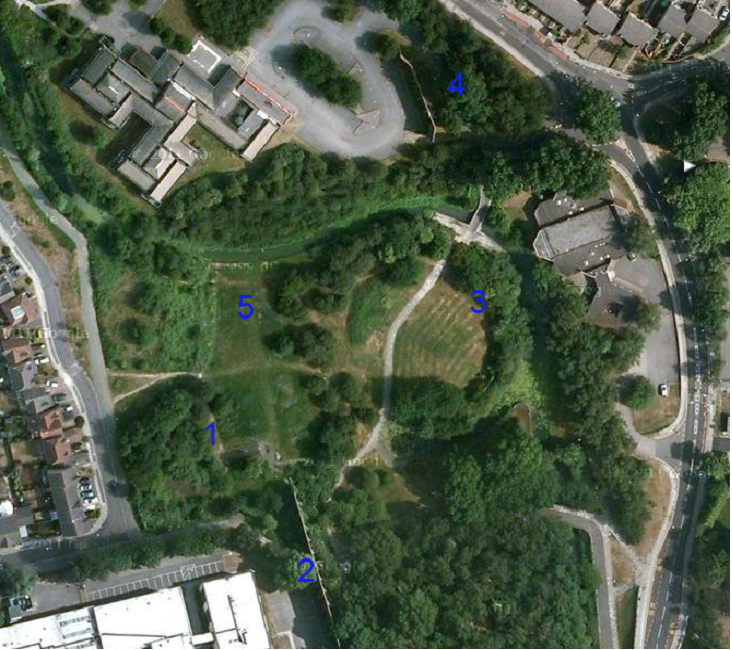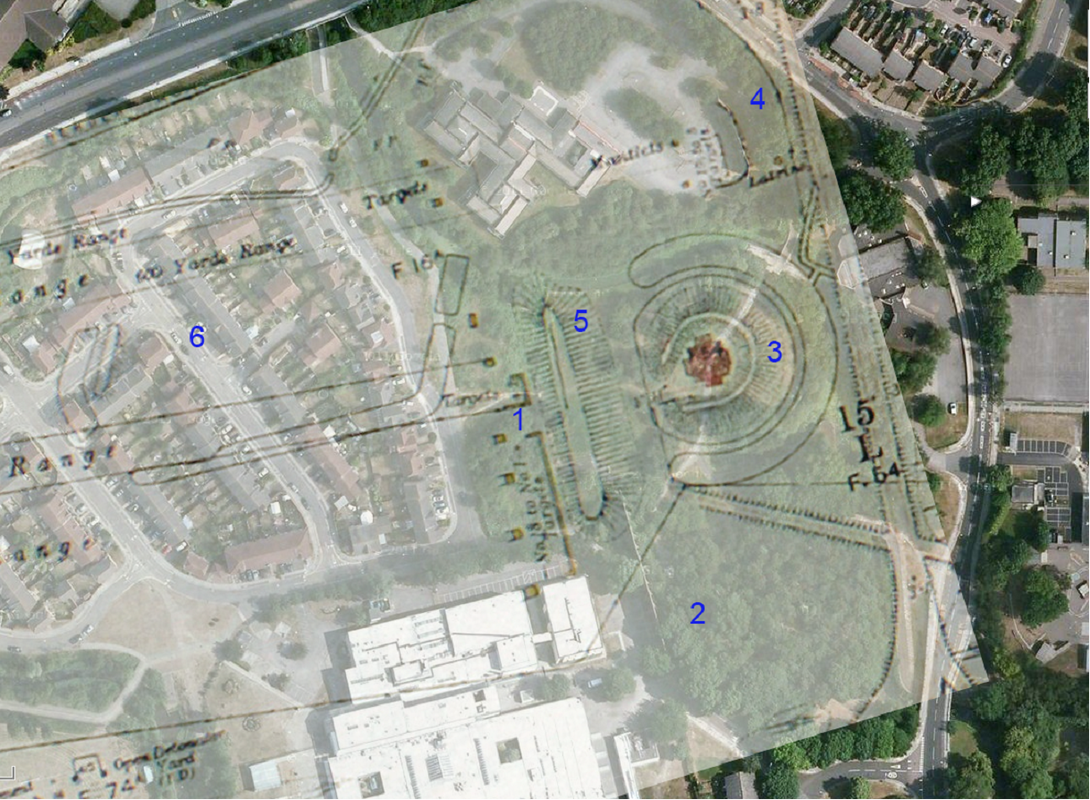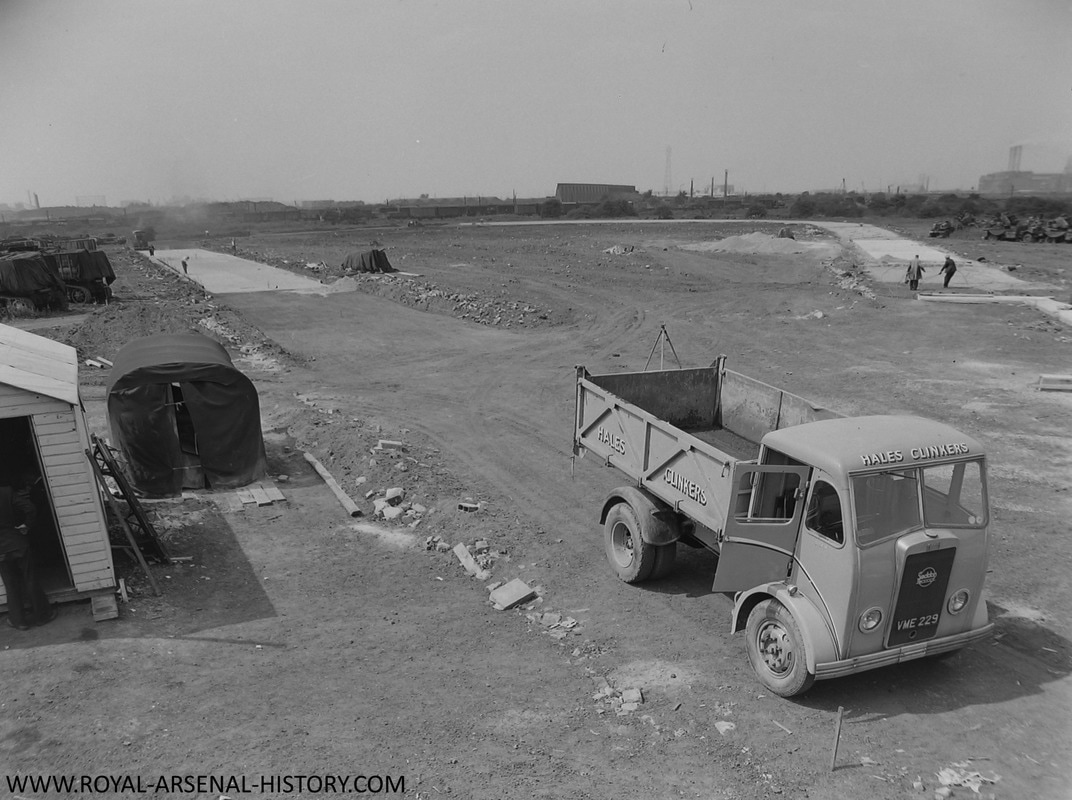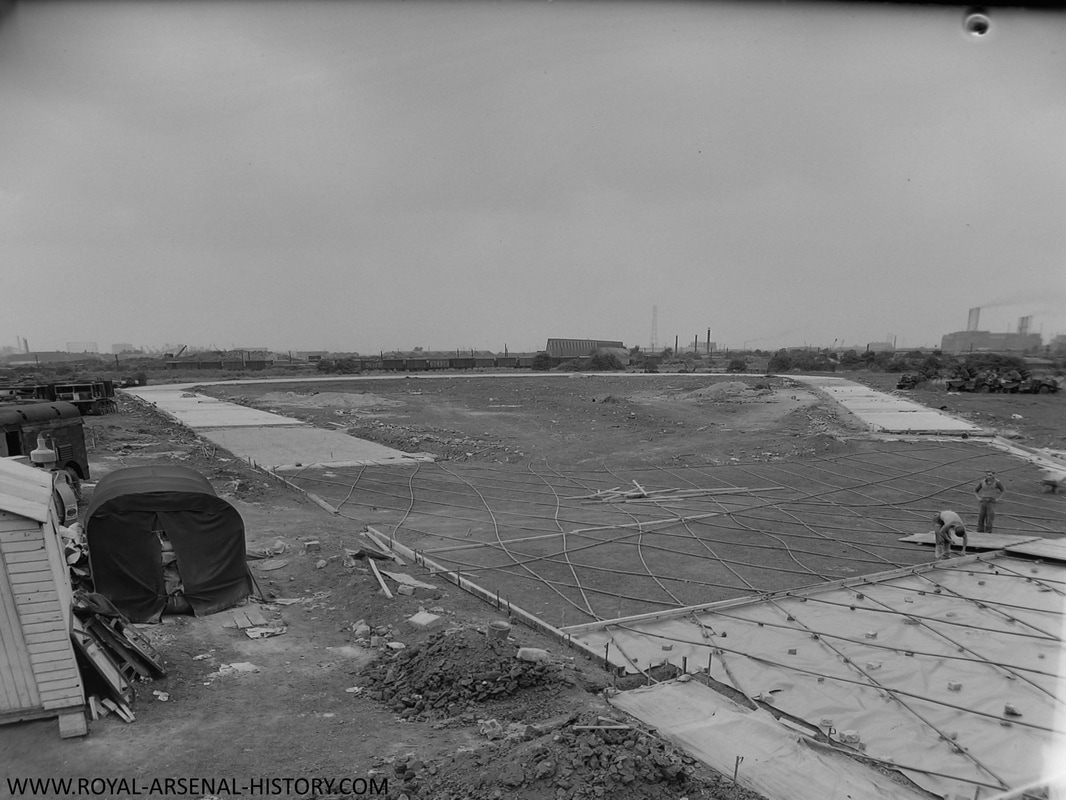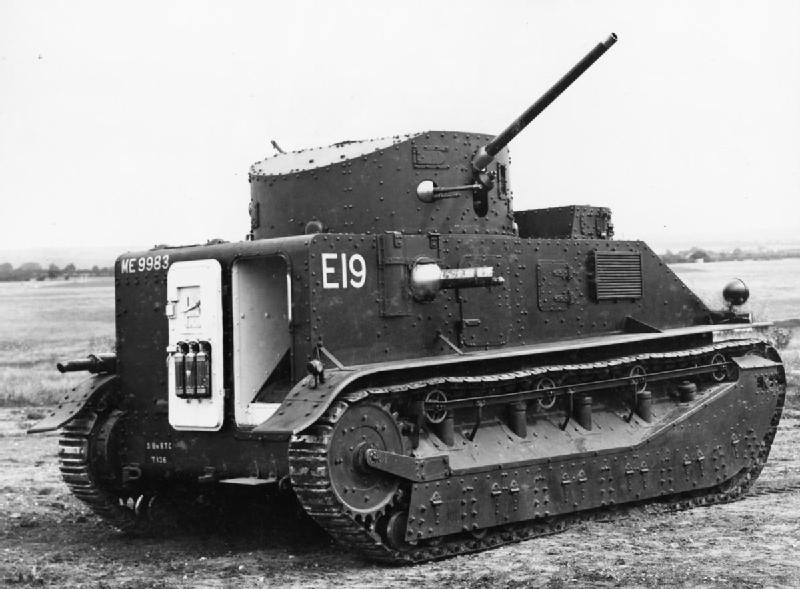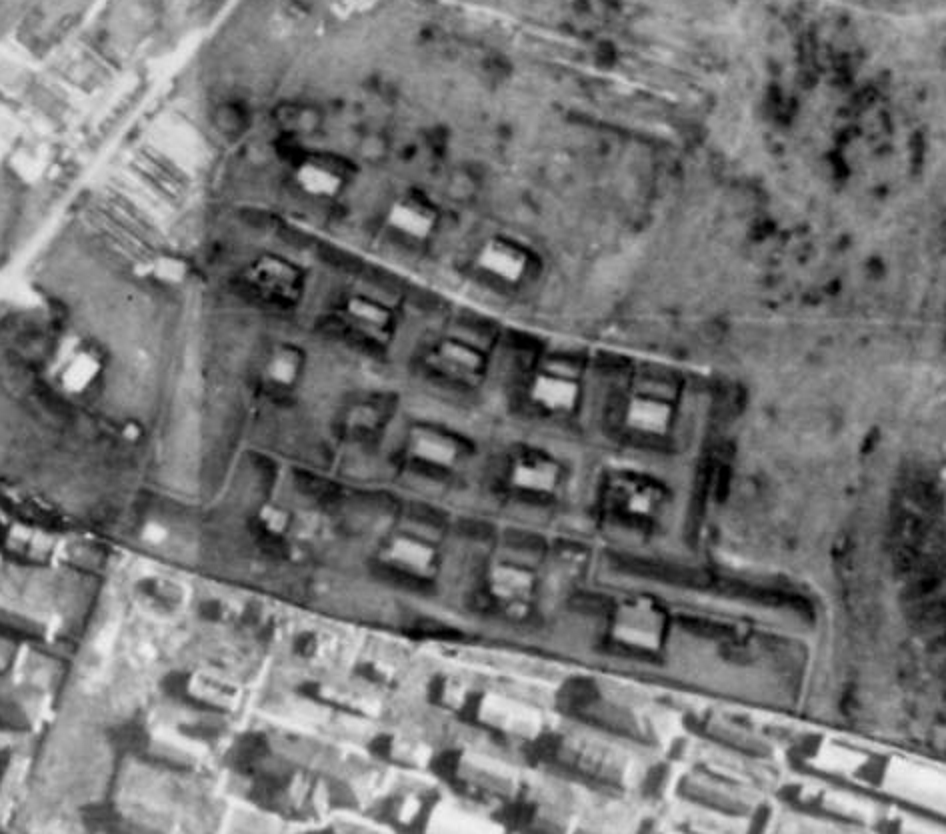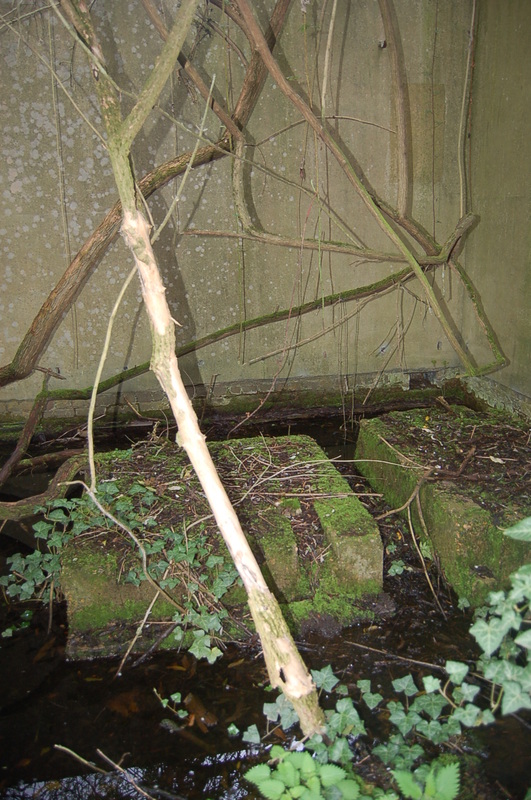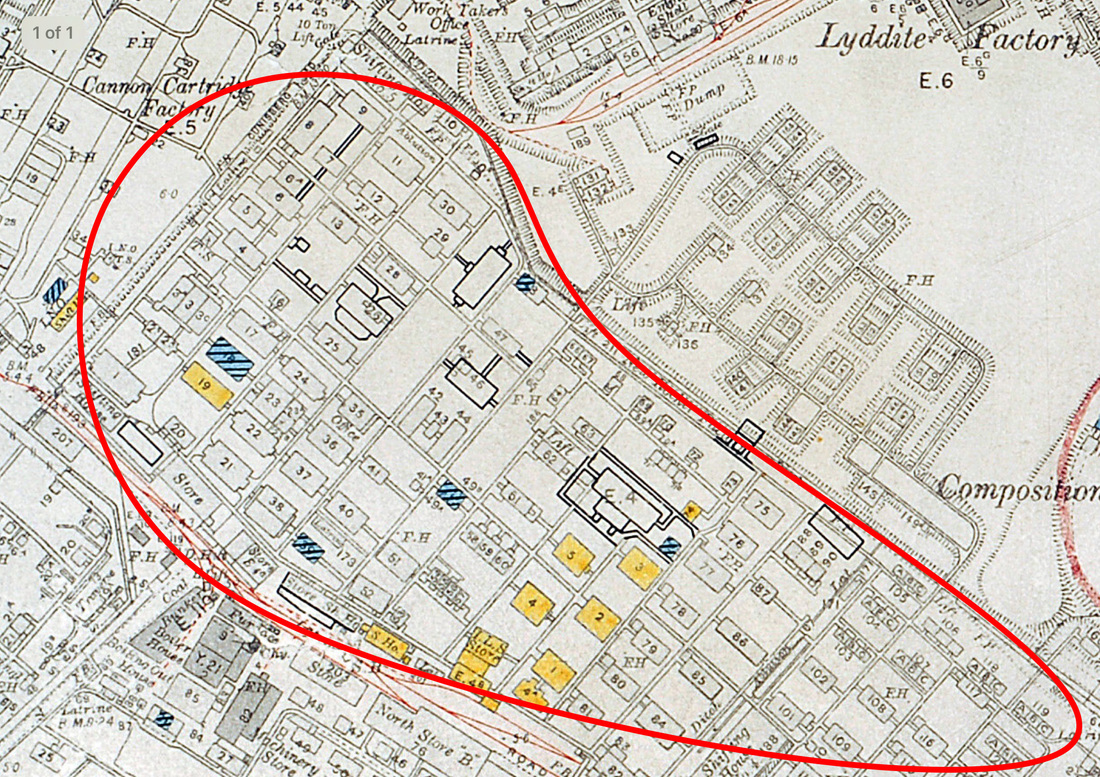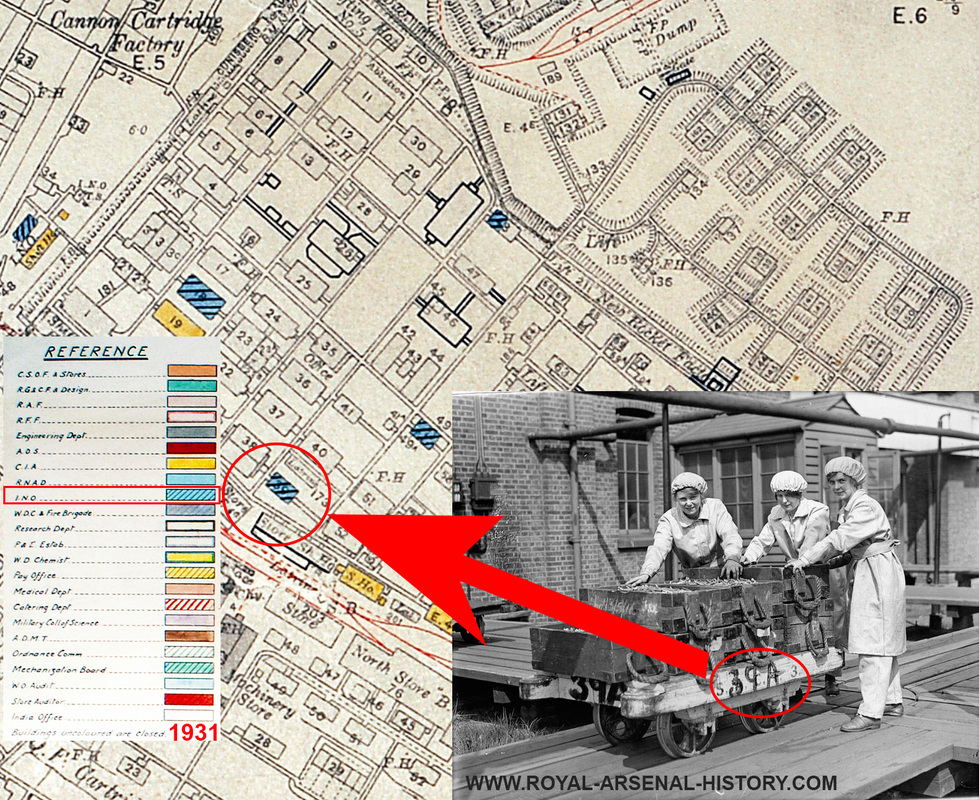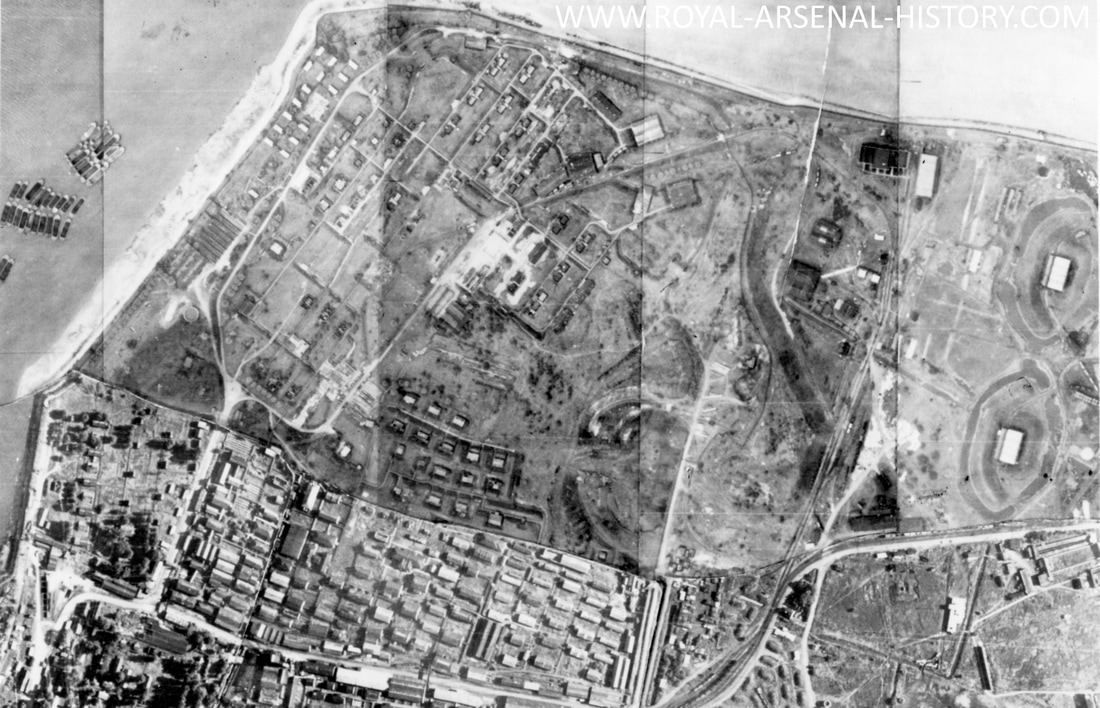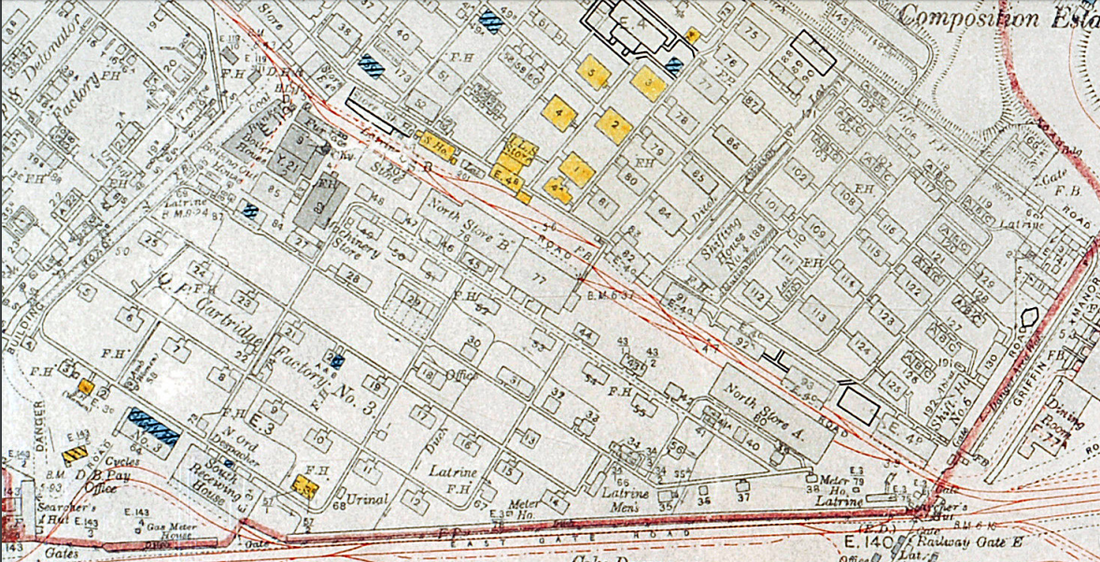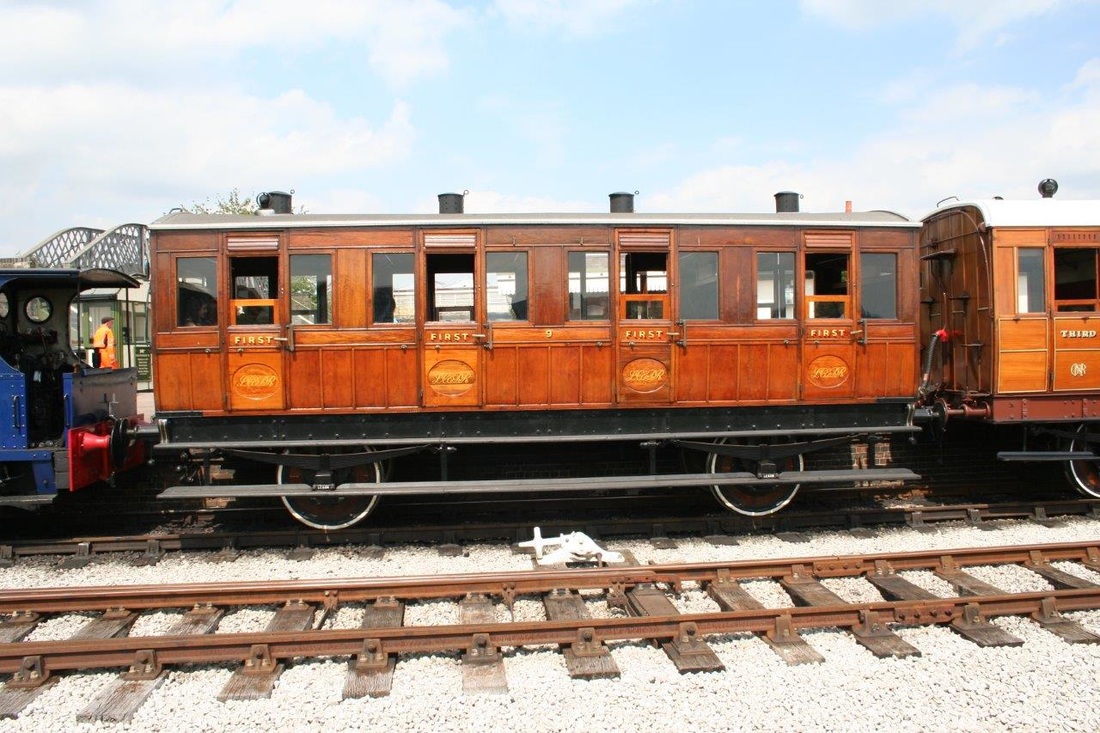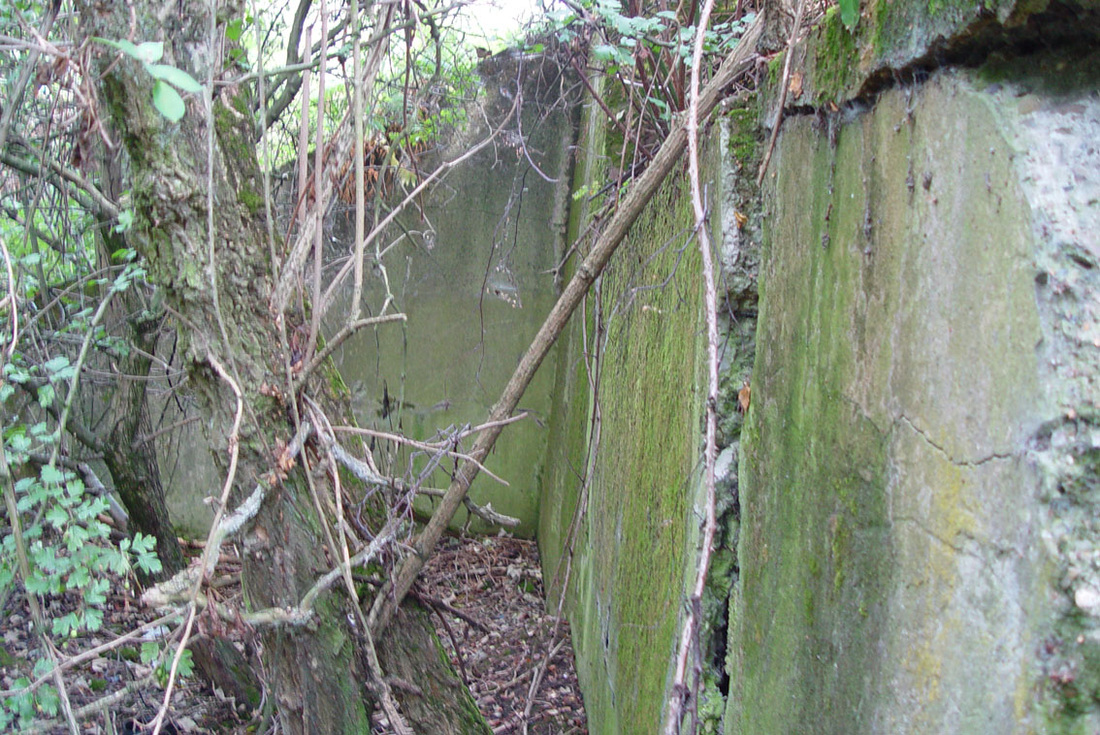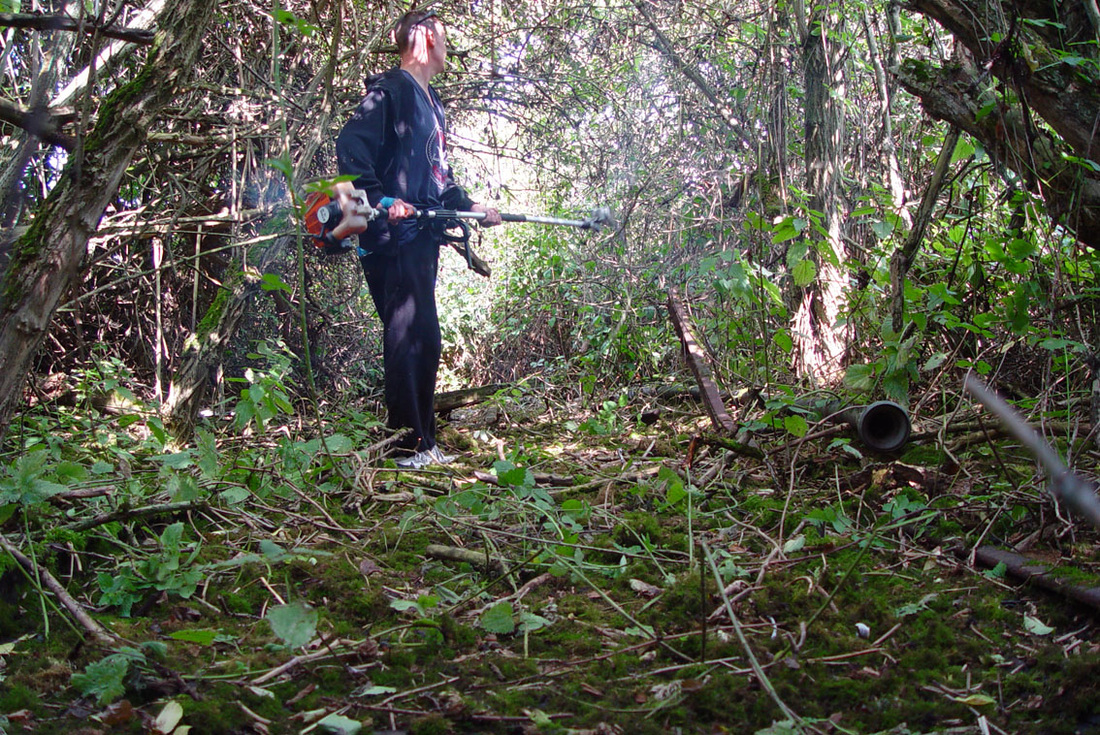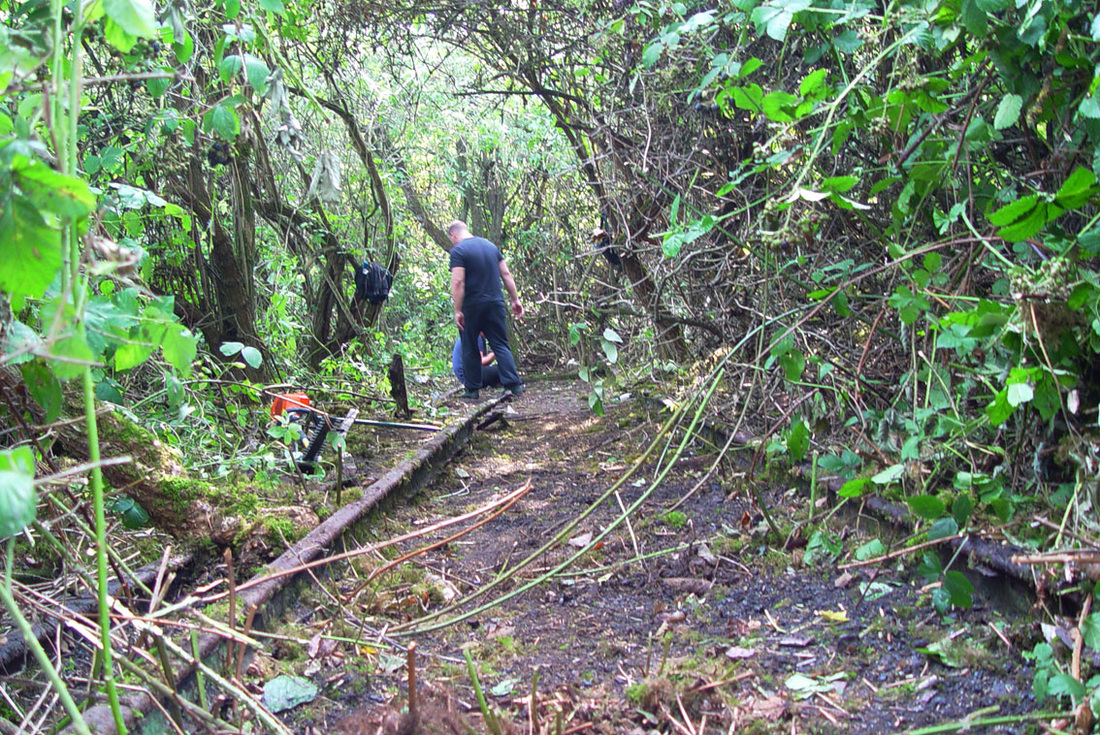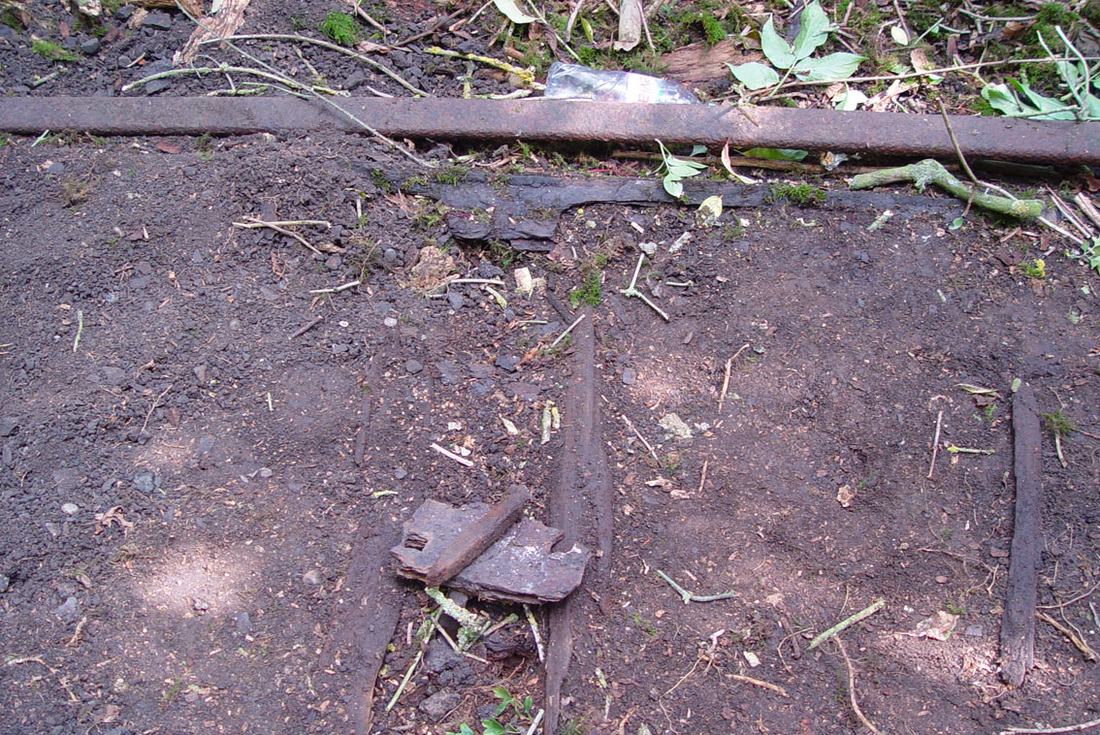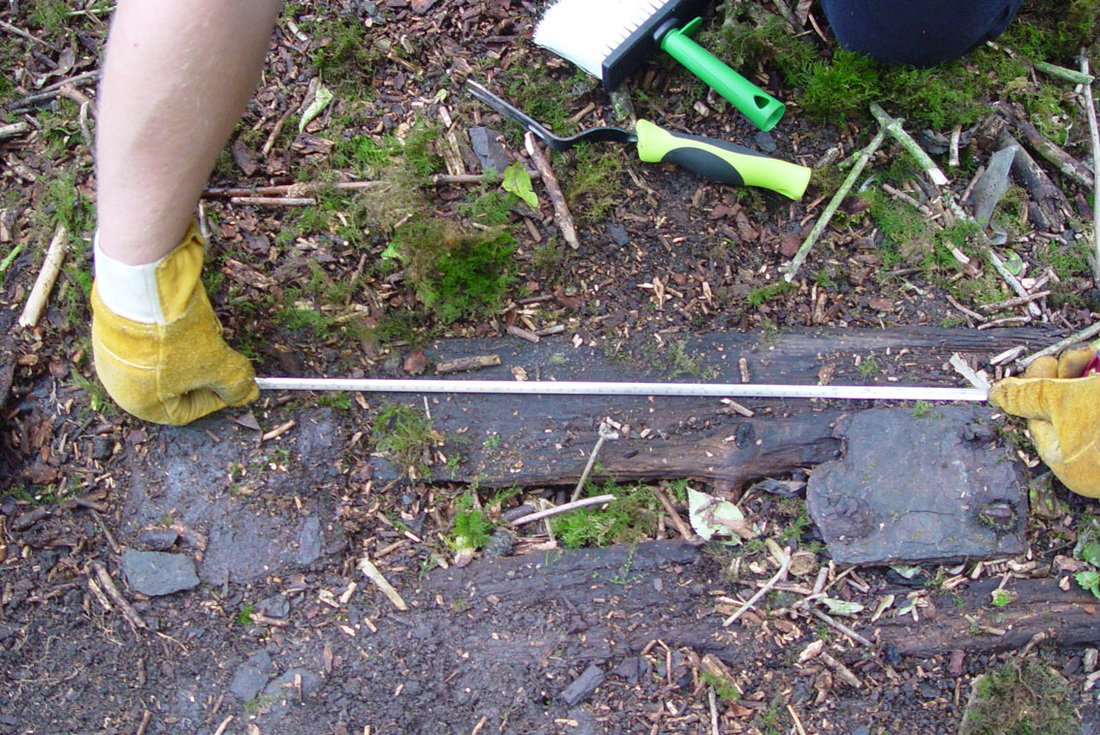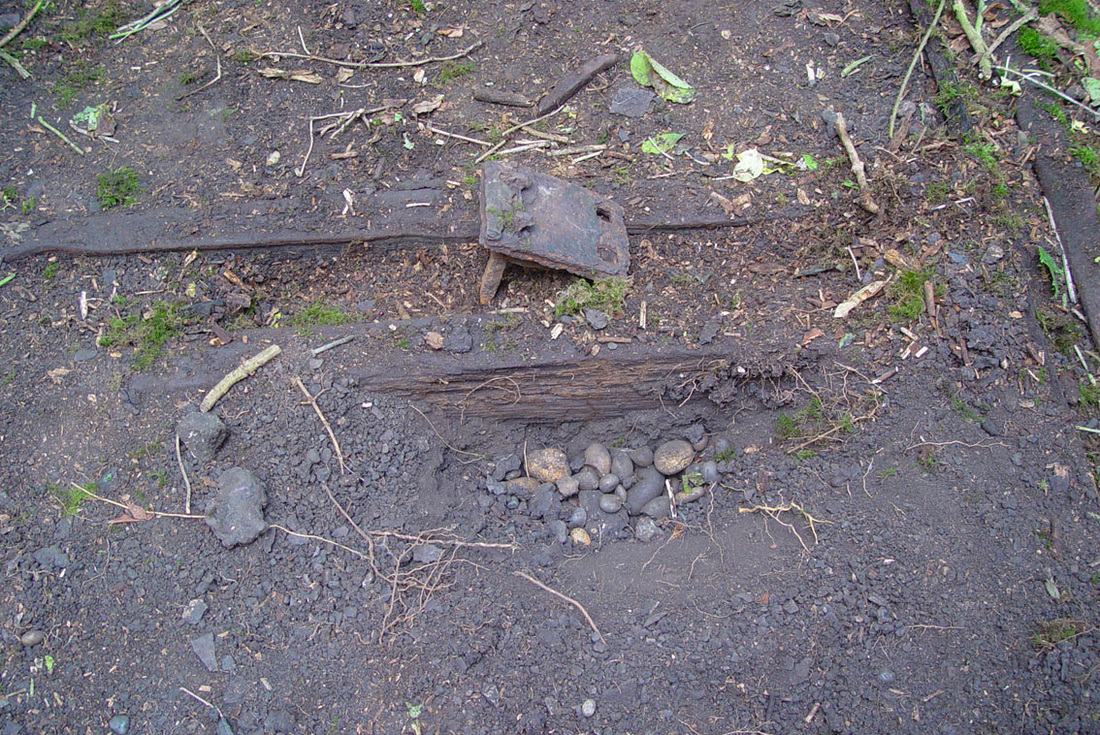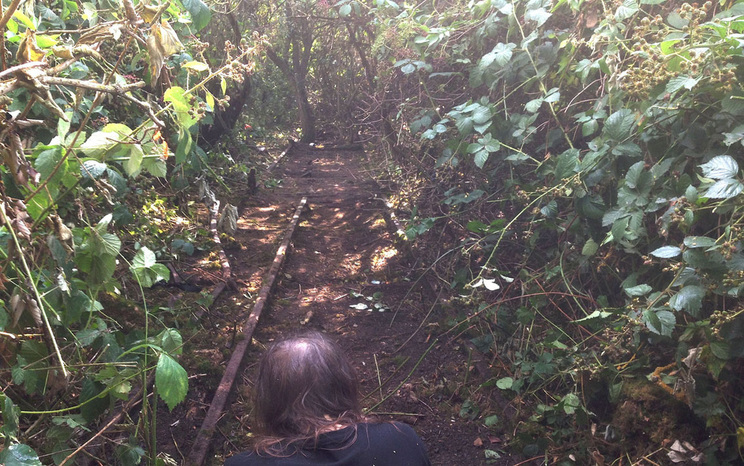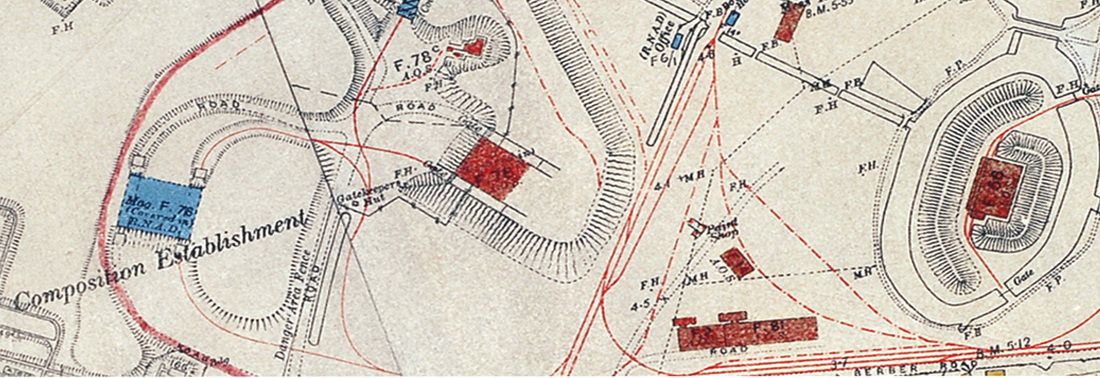Embark on a journey through the fascinating history of Thamesmead, from its early days as a Royal Arsenal to the birth of a dynamic new town. Uncover the thrilling stories and secrets behind the clock tower and other iconic landmarks, as well as the making and living in Thamesmead.
Explore captivating presentations, videos, and rare photos and slideshows that bring the town's history to life, and discover the future of Thamesmead and its riverfront.
Take an exhilarating adventure through Thamesmead and explore maps, overlays, and more rare photos of the town's past. Learn about the previous town called Berber, Arsenal railway remains, the magazines known as TUMPS, the Royal Arsenal's danger buildings and the Women workers that played an important role in Britain's history.
This is an opportunity to truly immerse yourself in the rich and exciting history of Thamesmead and discover its secrets.
Explore captivating presentations, videos, and rare photos and slideshows that bring the town's history to life, and discover the future of Thamesmead and its riverfront.
Take an exhilarating adventure through Thamesmead and explore maps, overlays, and more rare photos of the town's past. Learn about the previous town called Berber, Arsenal railway remains, the magazines known as TUMPS, the Royal Arsenal's danger buildings and the Women workers that played an important role in Britain's history.
This is an opportunity to truly immerse yourself in the rich and exciting history of Thamesmead and discover its secrets.
The Eastern end of the Royal Arsenal was used largely for the Military customer's
Changes in Thamesmead over the last 100 years
The Royal Arsenal and the New Town of Thamesmead
The Royal Arsenal, located in Woolwich, South East London, has a rich history dating back to the 16th century. It was originally established as a storehouse for weapons and ammunition for the English army, but over the years it evolved into a major manufacturing facility and played a crucial role in both World Wars. The site was finally closed in 1967, and the land was later developed into a new town, Thamesmead.
The Birth of Thamesmead
Thamesmead is a new town located in the London Borough of Greenwich, on the south bank of the River Thames. It was built on the land of the former Royal Arsenal and was intended to be a solution to the housing crisis in London in the 1960s.
The development of Thamesmead was a massive undertaking, involving the construction of thousands of homes, as well as schools, shops, and other amenities. The new town was designed to be self-sufficient, with everything residents needed within easy reach.
The first residents of Thamesmead moved in during the late 1960s, and the town continued to grow throughout the 1970s and 1980s. Today, Thamesmead is home to around 40,000 people and has a diverse community, with a mix of social housing and private properties.
The development of Thamesmead was a massive undertaking, involving the construction of thousands of homes, as well as schools, shops, and other amenities. The new town was designed to be self-sufficient, with everything residents needed within easy reach.
The first residents of Thamesmead moved in during the late 1960s, and the town continued to grow throughout the 1970s and 1980s. Today, Thamesmead is home to around 40,000 people and has a diverse community, with a mix of social housing and private properties.
Thamesmead Clock tower - Where did it come from?
Thamesmead clock tower history
From a window of Daubeney Tower on Pepys Estate in 1981 you could see Rupert Murdoch's empire expanding in old Deptford. The 18th century storehouse, built around the original storehouse of Henry VIII's Deptford Dockyard, was being demolished to make way for more low-rise warehousing for Convoy's newsprint importers.
In a glorious position on the old building, looking outwards to the river and inwards towards Deptford, was a clocktower. Known locally as Nelson's Clock, it had survived all the upheavals of the 19th century, remained a landmark of the Foreign Cattle Market, and even graced the road transport depot which had replaced the market by 1931.
The clock cupola was saved from being pulverised, in the general demolition, by the GLC who had it removed first to Woolwich for repair, and then in September 1985 to the Ranger's House on Blackheath for £60,000-worth of restoration.
Just a few weeks before the abolition of the GLC in April 1986, Deptford's clocktower was donated to what the Mercury optimistically labelled the "exciting town centre at the vibrant focal point of Thamesmead".
See more photos of the clock tower here
The clock was described by a GLC spokesman as "a landmark for the people of Thamesmead to remember us by" more here
In a glorious position on the old building, looking outwards to the river and inwards towards Deptford, was a clocktower. Known locally as Nelson's Clock, it had survived all the upheavals of the 19th century, remained a landmark of the Foreign Cattle Market, and even graced the road transport depot which had replaced the market by 1931.
The clock cupola was saved from being pulverised, in the general demolition, by the GLC who had it removed first to Woolwich for repair, and then in September 1985 to the Ranger's House on Blackheath for £60,000-worth of restoration.
Just a few weeks before the abolition of the GLC in April 1986, Deptford's clocktower was donated to what the Mercury optimistically labelled the "exciting town centre at the vibrant focal point of Thamesmead".
See more photos of the clock tower here
The clock was described by a GLC spokesman as "a landmark for the people of Thamesmead to remember us by" more here
Royal Arsenal History embedded in Thamesmead's Landscape
The link between the decline of the Royal Arsenal and the creation of Thamesmead is crucial to understanding the development of this new town. The Royal Arsenal was a major supplier of armaments for over 300 years, but as technology and manufacturing methods changed, the Arsenal's importance diminished. The closure and sale of the land made it possible for the government to develop a new town, providing much-needed housing and community facilities for Londoners. Without the decline and closure of the Royal Arsenal, the land would not have been available for development, and Thamesmead would not exist today.
Photo credit to: Richard Spink
A map of the Royal Arsenal 1918 overlaid with Thamesmead roads, housed and canals and lakes.
Thamesmead Royal Arsenal Area "E" and "F" photo's from 1981
Royal Arsenal, Thamesmead "Then and now"
Thamesmead, Tump 53 and Royal Arsenal History
March 2016 - Can you help save this historical landscape?
2022 - will the danger buildings be saved?
The new town of Thamesmead after Royal Arsenal closure
The construction of a new town of Thamesmead after Royal Arsenal closure 1968 - 1970
Living at Thamesmead 1974
Living at Thamesmead 2009
Thamesmead video compilation
This video compilation mix takes you through the unique 21st century utopia of Thamesmead, featuring its stunning Brutalist architecture, post-war green wilderness oasis spaces, and rich history. A must-watch for anyone interested in urban planning, architecture, and design and a glimpse of what it was like to grow up there. Good or bad it was a unique experience.
Thamesmead Stage 3 Construction 1972 - 1976
The Thamesmead Stage 3 construction project was a significant development initiative that took place in the London Borough of Greenwich during the 1970s. The project, which spanned a period of four years from 1972 to 1976, aimed to provide much-needed housing for the growing population of London, as well as improve the overall infrastructure of the area. However, due to contamination issues, the original plans for a marina and additional concrete flats were not implemented and were replaced by private sector homes. See our then and now video for more detials.
Thamesmead Slideshow from over the years
A slideshow compilation of Thamesmead of over 200 photos from the town centre and clock tower, through the different stages Discover the Best Thamesmead Photos: A Photographic Journey through time. Explore a compilation of the most memorable and iconic Thamesmead photos, starting from the Town centre and covering all stages of development over the years. See rare pictures collected from RAH and members of the Thamesmead all stages SE28 Facebook group, Photos are in synced with the beat of popular old songs "Time After Time" by Cyndi Lauper and "Every Breath You Take" by The Police for a unique and immersive slideshow experience. Discover Thamesmead's landmarks, including the town centre, Gogies shops, the original boiler House, Stage 1, 2 and 3 areas, the twin tumps, A bridge, Adventure Playgrounds, Pyramid Club, Southmere Lake, Birchmere Lake, Canals, Concrete Towers, and Canals Wildlife and much more! A Thamesmead photo gallery, a picture Book - A Photographic Journey of Memories!
Thamesmead Riverfront GLC extension contract 11
The Thamesmead Riverfront GLC extension contract 11 was a project in the late 1970s and early 1980s to extend the Thamesmead Riverfront area in London, England. The plans for a new town centre with a marina did not proceed as originally intended, instead the new riverwall boundaries were extended and a new lake 6 called Silvermere was created next to the Twin Tumps. The area was also developed with other amenities such as housing. The Greater London Council (GLC) was the governing body overseeing the project and the new river wall was was put in place to improve flood defences for the area. The pumping station, lake 5 and riverwall to the east were created a few years earlier.
Thamesmead 1945 and 2010
Thamesmead Riverfront, the forbidden playground. War games and the hidden history of Thamesmead.
A scanned brochure for a Blue Remembered Hill Play on restricted access to former Royal Arsenal land in 2021. Secrets of a secret location. Information provided by RAH.
Blue Remembered Hills 'Secret Location' at GDIF 2021 was an outdoor play in a restricted area in Thamesmead between 7th and 11th September 2021 located near the old Victorian Magazine area not far from the Twin Tumps.
Thamesmead Adventure 1989 - 2000 in Royal Arsenal east Wastelands, north proof butt area.
Past and Present
1940 - German bombers over Thamesmead with overlay of various maps.
Berber
Below: Overlay shows where the "Berber" area was located in Thamesmead Stage 3, Linton Mead Primary School area. Central Way was "Berber Road" Little do people know that Linton Mead was on a site of a busy railway system. I have marked up the exact location.
1953 Flood: Below shows the narrow gauge as well as the standard gauge railway. The Royal Arsenal invaded the fields of Thamesmead as we know it today and put granite roads, railways, and gas lamps in the middle of farmland. It took over the Eastern end in 1903. Again, it's in the area called 'Berber'. There's a school between Crossway and the river called Linton Mead - it's about there. These photo's are "rare" and capture the real history.
More information on Berber here
Below: A Magazine (Aka Tump!) without a moat near Sewer bank in running across photo. It's taken from Cross Manor Way which doesn't exist any more looking South. The Tump is F99. See map below.
Below: Magazine F102 near Crossness (Known as the old Thamesmead Golf Course area today)
Below: Arial view of the Moorings and Waterfield. Known as Tump 53 -(Traffic number F53) is Magazine 14 which is still there today and the remains of Magazine F15, traffic number F54.
Passfield Path looks like it gets it name from the below field path. A Magazine took up the whole size of Passfield Path. The developers built a small brick park in the shape of a Magazine when the area was built. later on to be replaced by a metal framed park.
Passfield Path looks like it gets it name from the below field path. A Magazine took up the whole size of Passfield Path. The developers built a small brick park in the shape of a Magazine when the area was built. later on to be replaced by a metal framed park.
Below: Map of same area above
Below: Clearest and closest photo's I have managed to obtain of the Hawksmoor & Waterfield area. Looks like lots of Military trucks where Hawksmoor School is.
Waterfield Area (The Butts)
If you were in Thamesmead in the 80's early 90's then you will know the below mound as the bumpy slide park. Hard to believe this was where Cannons fired into.. everything has a story to tell... the mound is still there today.
16" Mk I, 81 tons from 1878. Used aboard H.M.S. Inflexible.
Armstrong's 'monster' gun
William Armstrong’s 111-ton ‘monster’ gun. 11 June 1887 the picture shows the testing of the weapon – then the largest gun in existence – at Woolwich Arsenal in southeast London (now Thamesmead know as Royal Arsenal East)
Below: Known as the
Butts or Butts Wood. (Waterifeld School is now Woolwich Poly Secondary school)
The 1931 map overlay shows the position of the butts. For heavy guns you will see North, Middle and South butts The residual wall would have had masses of sand piled up against it. When guns were proof fired the proof round was 'captured' by the sand, thus causing no structural damage, while the gun was put to an additional stress level to ensure a safety margin was achieved. As gun specifications and capabilities increased so the Woolwich butts proved to be inadequate. New facilities were built at Shoeburyness to cater for the more emanding/heavy duty gun proving.
Below: Arial view of Waterfiled (Magazine 15 area - Tump 54) today
1. Firing range wall (no longer there)
2. Firing range (Still there today)
3. Magazine 15 (F54)
4. Gallons reach firing range – smaller wall in height and length.
5. Mud mound (Turfed and with large bumpy slide until mid 1990’s)
The 1931 map overlay shows the position of the butts. For heavy guns you will see North, Middle and South butts The residual wall would have had masses of sand piled up against it. When guns were proof fired the proof round was 'captured' by the sand, thus causing no structural damage, while the gun was put to an additional stress level to ensure a safety margin was achieved. As gun specifications and capabilities increased so the Woolwich butts proved to be inadequate. New facilities were built at Shoeburyness to cater for the more emanding/heavy duty gun proving.
Below: Arial view of Waterfiled (Magazine 15 area - Tump 54) today
1. Firing range wall (no longer there)
2. Firing range (Still there today)
3. Magazine 15 (F54)
4. Gallons reach firing range – smaller wall in height and length.
5. Mud mound (Turfed and with large bumpy slide until mid 1990’s)
Below: Arial view of Waterfield today, Magazine 15 area (Tump 54) overlayed with 1931 map of the Arsenal. The area was between the two major small arms ranges situated in the Arsenal. Some experimental firing was also carried out there.
1. Small arms Firing range (not there today)
2. Firing range wall at Waterfield (Still there today)
3. Magazine 15 (F54) - Magazine 15, traffic number F54, was used by Army Ordnanc Services for bulk storage of cordite.
4. Gallons reach firing range, wall stands today.
5. Mud mound (covered in grass with a large bumpy slide until 1990’s) this mud mound is there today. Used as a picnic area and a place with a hill for go-carts and bikes when kids.
6. Area number 6 used to be a wooded area in the 1980’s/90’s.
1. Small arms Firing range (not there today)
2. Firing range wall at Waterfield (Still there today)
3. Magazine 15 (F54) - Magazine 15, traffic number F54, was used by Army Ordnanc Services for bulk storage of cordite.
4. Gallons reach firing range, wall stands today.
5. Mud mound (covered in grass with a large bumpy slide until 1990’s) this mud mound is there today. Used as a picnic area and a place with a hill for go-carts and bikes when kids.
6. Area number 6 used to be a wooded area in the 1980’s/90’s.
As you can see another wall existed in front of mound 5, wall 1. This must of been pulled down late seventies, later to become bumpy slide park. This lasted until mid 1990s and as of today abandoned and overgrown space.
As a kid growing up on Thamesmead, I always wondered what this place used to be. In area 6, I remember concrete fence posts and all kinds of overgrown mud mounds and trenches. I found many live bullets and shrapnel here digging only 6 inches or so, this is where many cannon balls were found too.
The items found semi buried were to be expected. Though ordinarily you would not have expected to find live rounds, during WWII any enemy airstrike could easily give rise to live rounds being caught up in explosions and therefore strewn about the locality. The cannon balls stemmed from much earlier activities on site. Cannon balls fired in the direction of Plumstead, or even Erith, marshes would sink out of sight when and wherever they landed. Prior to such firings being from West to East they were carried out from South to North. Occasionally that proved to be dangerous to passing ships and/or to farm animals on the North side of the river. Hence the ranges were realigned.
The two small arms ranges were designed to meet different requirements and although similar in some respects are necessarily different overall.
The long mound 5 provided a safety barrier at the eastern end of those ranges.
The items found semi buried were to be expected. Though ordinarily you would not have expected to find live rounds, during WWII any enemy airstrike could easily give rise to live rounds being caught up in explosions and therefore strewn about the locality. The cannon balls stemmed from much earlier activities on site. Cannon balls fired in the direction of Plumstead, or even Erith, marshes would sink out of sight when and wherever they landed. Prior to such firings being from West to East they were carried out from South to North. Occasionally that proved to be dangerous to passing ships and/or to farm animals on the North side of the river. Hence the ranges were realigned.
The two small arms ranges were designed to meet different requirements and although similar in some respects are necessarily different overall.
The long mound 5 provided a safety barrier at the eastern end of those ranges.
Below area 2: Small arms firing range (Butts wood side) The Arch was added in the 80’s. There are bullet holes covering the wall from both sides.
Below: photo of firing range from mound 5
Below: Blast mound 5 - Magazine 15 (F54) to the left of this photo. The long mound was to protect the Magazine, but it was also a blast deflector should Mag 15 explode.
Below: Area 4 Gallion's Reach Health center Firing range. (Hence the name) Small arms firing range (with photoshop flag). Flag Pole brackets remain on the today as per photo on the right. The flag would of been red when live firing was taking place. There would not of been a union Jack.
Samuel Colt: The fate the Colt gun depended on the above area.
When the Great Exhibition opened in Hyde Park in 1851, Colt reserved a prominent stand displaying his wares.
His best customer was the army and, by the early 1850s, Colt had many factories in Europe, including one at Besborough Place, Plmlico, employing
200 workers.
By now, Colt had the world’s largest private armoury, being the biggest supplier of handguns in the world.
In 1854, he sold 4,000 revolvers to the Royal Navy for issue to naval officers before turning his attention to the British Army.
However, at this time, Robert Adams, a London gunsmith, was in the process of developing a revolver and was hopeful of eventually selling It to the army.
The War Office dragged its feet and it was 1858 before the army had decided on a revolver. But how did they come to its decision between Colt and Adams?
The army felt to decide which was best, a contest should be held between the two gunsmiths.
On May 28, 1858, Samuel Colt and Robert Adams presented themselves at the Royal Arsenal Woolwich and were taken to the shooting butts for small arms.
Two one-foot square paper targets were erected and the two contestants placed 50 yards from them.
It was a windy day but the contest went ahead, with each gunsmith firing 36 shots, 18 quickly, 18 at random.The Adams was found to be the more accurate weapon and the War Office placed an order with him for 5,000 revolvers for the British Army.Dejected and feeling rejected, Samuel Colt closed his London factory and returned to America.But for a twist of fate, British Army officers may have carried the same weapon as the American cowboys.
When the Great Exhibition opened in Hyde Park in 1851, Colt reserved a prominent stand displaying his wares.
His best customer was the army and, by the early 1850s, Colt had many factories in Europe, including one at Besborough Place, Plmlico, employing
200 workers.
By now, Colt had the world’s largest private armoury, being the biggest supplier of handguns in the world.
In 1854, he sold 4,000 revolvers to the Royal Navy for issue to naval officers before turning his attention to the British Army.
However, at this time, Robert Adams, a London gunsmith, was in the process of developing a revolver and was hopeful of eventually selling It to the army.
The War Office dragged its feet and it was 1858 before the army had decided on a revolver. But how did they come to its decision between Colt and Adams?
The army felt to decide which was best, a contest should be held between the two gunsmiths.
On May 28, 1858, Samuel Colt and Robert Adams presented themselves at the Royal Arsenal Woolwich and were taken to the shooting butts for small arms.
Two one-foot square paper targets were erected and the two contestants placed 50 yards from them.
It was a windy day but the contest went ahead, with each gunsmith firing 36 shots, 18 quickly, 18 at random.The Adams was found to be the more accurate weapon and the War Office placed an order with him for 5,000 revolvers for the British Army.Dejected and feeling rejected, Samuel Colt closed his London factory and returned to America.But for a twist of fate, British Army officers may have carried the same weapon as the American cowboys.
Some Royal Arsenal findings from Thamesmead residents in the same area
The wagons in the background of of the tank testing track photos are in Marsh Sidings.
These were built in 1916 at the end of the new branch over the sewer bank from Plumstead goods yard. The trains were hauled that far by main-line engines. The wagons were sorted by destination by the RAR in the sidings and then RAR locomotives would take them to wherever
in the Arsenal. In WW1 the figures were amazing, 1200 wagons every day.
These were built in 1916 at the end of the new branch over the sewer bank from Plumstead goods yard. The trains were hauled that far by main-line engines. The wagons were sorted by destination by the RAR in the sidings and then RAR locomotives would take them to wherever
in the Arsenal. In WW1 the figures were amazing, 1200 wagons every day.
Below: This is the Vickers MkII Medium tank. It served with the British Army between 1924 and 1938 and was the only heavy-ish tank they had. All the inter war maps of the Royal Arsenal show 'Tank Garages' so there's a very good chance that this was taken in the Eastern end of the Arsenal. (See above Tank testing track - F80) which is now known as Birchmere Park.
After WW2 the Arsenal concentrated on building tanks, particularly the Centurion which was largely designed there. A tank testing track was laid out in the early 1950s and was used for many years after production ceased in the RA in 1967. I believe the track was removed piece by piece to the tank factory at Chobham in Hampshire and it's still there today.
After WW2 the Arsenal concentrated on building tanks, particularly the Centurion which was largely designed there. A tank testing track was laid out in the early 1950s and was used for many years after production ceased in the RA in 1967. I believe the track was removed piece by piece to the tank factory at Chobham in Hampshire and it's still there today.
The Wastelands - Danger Building Area
Below: Today, not much remains here except one small area. Nature has been left to do as it pleases for over 60 years in this last surviving mysterious area (Photo 2012).
Below: The mysterious area mentioned above circled below with Triangle blast mounds protecting each building that I once came across when a kid. Each building had two square concrete footings in the center of each. Small windows and slots to pass stuff in and out of buildings. Very small walkways between each triangle mound. I found this area in 1993 when I was 12 years old hidden away in what was then an overgrown jungle of ruins back then.
Below: Confirmed location with 1931 Map with 2012 map. Verifying to scale Google map of selected area – perfect match.
Below: Please take note building number 140 below in the middle of the photo above the word Rocket Factory.
A little exploration trip 20 years later (2012) to the designated area above.
Confirmed Building 140 (2012 photo) from 1931 Map below.
Video of the same area below video in 2016 after cleanup of overgrowth prepairing to be fenced off by Peabody
What was this area?
The areas behind the earth walls once held 'Nitrators'. some sources confirm these were the machines that made Nitro-Glycerine**, the raw material of the high explosive made in the Lyddite factory just to the North. Nitration was an extremely dangerous, outstandingly dangerous, process. Thus the thick blast walls.
**I have had recent report from a respected source that the Royal Arsenal did not produce Nitro-Glycerine in the Arsenal. Once the Lyddite factory was closed the Arsenal imported its explosives and propellants from Waltham Abbey and subsequently from other Royal Ordnance Factories. The Research Department carried out some experimental development work on new and improved explosives on site.
More research required.
**I have had recent report from a respected source that the Royal Arsenal did not produce Nitro-Glycerine in the Arsenal. Once the Lyddite factory was closed the Arsenal imported its explosives and propellants from Waltham Abbey and subsequently from other Royal Ordnance Factories. The Research Department carried out some experimental development work on new and improved explosives on site.
More research required.
Each Nitrator was only about the size of a dustbin - see the photo below with the two concrete blocks in the building which they stood on!. The destructive power inside them can hardly be believed. The output had to be heavily 'diluted' before they could make stable explosive from it.
In the Danger Building Area the buildings were normally small, with fragile roofs and with earth blast mounds around.
Qualities of materials handed in to and out of each building were kept to the smallest practical amounts to ensure that should there be an explosion casualties and damage would be kept to a minimum. You can see from the photo below where the materials where handed in and out (photo below taken 2016)
Any blast would easily leave via the roof and lateral blast would be deflected up and away from adjacent buildings by the blast mounds.
Information was sent through after I posted the above "The latter was essentially Picric Acid that had no nitro glycerine content and was an outdated shell filling by WWI."
What year was this area built and what was nearest locomotive railway track?
See map below. Note that there aren't any railways very close to these buildings. That's because steel wheels on steel rails can cause sparks. Just to the North of the structures you'll see lines of mixed gauge railway and some narrow gauge. These would have been built in 1903 when the Lyddite Factory was constructed. They are in a cutting for safety and would have used oil-burning locomotives or the Arsenal's early Diesel-like machines (The first in the World - 1896) to avoid sparks and embers.
To the West and South West of the surviving structures you can see many small buildings highlighted above with 'paths' at 90 degrees to each other. Each of these was a raised wooden walkway. Making munitions was and is a process that required the cleanliness of a chemical plant and feet had to be kept away from the soil so everyone walked above ground
level. All of the wooden walkways contained a line of narrow gauge railway with turntables at each 90 degree junction. See below photos
Fuze Factory.
level. All of the wooden walkways contained a line of narrow gauge railway with turntables at each 90 degree junction. See below photos
Fuze Factory.
Hand Pushed.
These lines were 100% hand powered and every metal component was Bronze, never iron or steel. In fact every metal component of any type in these buildings was Brass or Bronze and when they were demolished the contractor was a scrap merchant! It is just possible that this Bronze railway went into the surviving area of buildings but we cannot be sure without old photos of the site. All this non-ferrous railway cost a fortune and a question was raised about the expense in the House of Commons.
As for accidents - not one. These buildings were the Lyddite factories Nitro-Glycerine plant, the workers would have been in fear of their lives and wouldn't have made mistakes.
In earlier 1903 the Royal Arsenals earlier Lyddite Factory had blown-up. 14 died and dozens would have been maimed for life. On Thursday 18 June 1903 at 8.10 in the morning, an explosion ripped through the shell filling rooms in the Lyddite Factory at the Royal Arsenal, Woolwich. Click here for more details of this incident.
When the Factory stopped making Lyddite in 1916 and went over to TNT the effect on the workforce was dramatic. No explosions but lots of poisoning. No-one knows how many Ladies in South East London died early from breathing Nitric acid vapour, probably thousands. No explosions though.
As for accidents - not one. These buildings were the Lyddite factories Nitro-Glycerine plant, the workers would have been in fear of their lives and wouldn't have made mistakes.
In earlier 1903 the Royal Arsenals earlier Lyddite Factory had blown-up. 14 died and dozens would have been maimed for life. On Thursday 18 June 1903 at 8.10 in the morning, an explosion ripped through the shell filling rooms in the Lyddite Factory at the Royal Arsenal, Woolwich. Click here for more details of this incident.
When the Factory stopped making Lyddite in 1916 and went over to TNT the effect on the workforce was dramatic. No explosions but lots of poisoning. No-one knows how many Ladies in South East London died early from breathing Nitric acid vapour, probably thousands. No explosions though.
The Future of Thamesmead's riverfront
Thamesmead has faced some challenges in recent years, with high levels of deprivation and crime. However, there are now plans in place to revitalize the area and make it a more attractive place to live includes the construction of new homes, the creation of new parks and green spaces, and the improvement of transport links. There are also plans to build a new town centre, which will include shops, restaurants, and other amenities.
In addition, the Thamesmead Waterfront development is currently under way, which will see the construction of thousands of new homes, a school, and a health centre, as well as the creation of new parks and open spaces. The development is expected to be completed by 2037.
Overall, the Royal Arsenal and the new town of Thamesmead have a rich history that is being told on this website. The Royal Arsenal played a crucial role in supplying weapons and ammunition to the army, while Thamesmead was an ambitious solution to the housing crisis of London in the 1960s. The Royal Arsenal and the new town of Thamesmead are an important part of London's history and have played a significant role in the development of the city. With the current plans for revitalisation, the area is set to become a desirable place to live in the future.
Royal Arsenal History and the Thamesmead community do hope the planners keep the last surviving danger buildings as shown the video and photos above. In recognition of the significant contributions of these women, the surviving danger buildings should be preserved as a memorial to the "munitionettes" and the important role they played in both world wars. These buildings are a testament to the hard work and sacrifices of these women, and they serve as a reminder of the important role they played in the history of London and the UK.
In addition, the Thamesmead Waterfront development is currently under way, which will see the construction of thousands of new homes, a school, and a health centre, as well as the creation of new parks and open spaces. The development is expected to be completed by 2037.
Overall, the Royal Arsenal and the new town of Thamesmead have a rich history that is being told on this website. The Royal Arsenal played a crucial role in supplying weapons and ammunition to the army, while Thamesmead was an ambitious solution to the housing crisis of London in the 1960s. The Royal Arsenal and the new town of Thamesmead are an important part of London's history and have played a significant role in the development of the city. With the current plans for revitalisation, the area is set to become a desirable place to live in the future.
Royal Arsenal History and the Thamesmead community do hope the planners keep the last surviving danger buildings as shown the video and photos above. In recognition of the significant contributions of these women, the surviving danger buildings should be preserved as a memorial to the "munitionettes" and the important role they played in both world wars. These buildings are a testament to the hard work and sacrifices of these women, and they serve as a reminder of the important role they played in the history of London and the UK.
Women workers
During World War I & II, many women were employed in the munitions factories accross Plumstead marshes (now Thamesmead), working in factories to produce weapons and ammunition for the front line. This work was known as "munitionettes" and it was a vital role in supplying the army with the necessary equipment to fight the war.
The women who worked in these factories were often working in dangerous conditions, handling explosive materials and operating heavy machinery. Despite the risks, these women were an essential part of the war effort, and their contributions to the war effort have been recognized as significant.
The "munitionettes" were typically paid less than men for the same work, and the work was physically demanding and dangerous. Many women suffered from health problems as a result of the work, including respiratory problems from inhaling the toxic chemicals used in the manufacturing process. Despite these challenges, the women worked tirelessly to support the war effort and to provide for their families.
The women who worked in these factories were often working in dangerous conditions, handling explosive materials and operating heavy machinery. Despite the risks, these women were an essential part of the war effort, and their contributions to the war effort have been recognized as significant.
The "munitionettes" were typically paid less than men for the same work, and the work was physically demanding and dangerous. Many women suffered from health problems as a result of the work, including respiratory problems from inhaling the toxic chemicals used in the manufacturing process. Despite these challenges, the women worked tirelessly to support the war effort and to provide for their families.
World War One
World War 2
For the first eighteen months of the Great War, nearly all of the army's gun ammunition was filled at Woolwich Arsenal, yet at the start of 1914 the Arsenal employed only half as many men as it had in 1901. At the start of the battle of Neuve Chapelle on 10th March 1915, the army would fire more shells in the opening barrage than had been fired in the whole of the Boer War. The Arsenal could not meet this scale of demand on its own, even with the men working 96 hours a week with just one day off every four weeks. The army's acute shortage of shells in the Spring of 1915 led to a political scandal - the Shell Scandal. The Prime Minister, Asquith, was forced into coalition government, and control of the Royal Ordnance Factories was transferred from Kitchener's War Office to a new Ministry of Munitions under Lloyd-George. He soon realised that only the mass employment of unskilled men and women in the factories could meet the army's needs. This "Dilution" of skill was negotiated with the trade unions, and from October 1915 the first women to work in the Arsenal since the previous century started their shifts. By the end of 1917 nearly 26,000 women - 35% of the Ordnance Factory workforce - worked in the Arsenal Plumstead marshes (now Thamesmead), mostly in shell filling and fuze and gaine assembly.
|
1914-1918
Shells made Shells filled Gun cartridges filled Fuzes made Fuzes filled Small arms bullets made |
Arsenal output
5,847,400 19,910,300 46,121,200 3,368,200 59,251,400 1,718,813,228 |
In the interview the lady mentions catching a train to Manor Way Halt,
To be completely accurate this means a railway station where trains stop by request only, just the same as a bus stop. Over the years it also came to be used for any temporary
station and that's what would have happened here. The name "Manor Way
Halt" therefore refers to a temporary station built by Griffin Manor Way located somewhere just below the red line on the map above. In the interview the lady said she was going to/from Plumstead so she'd have gone on the standard gauge with carriages just bought from
the main-line. Amazingly, one of those carriages has survived below.
To be completely accurate this means a railway station where trains stop by request only, just the same as a bus stop. Over the years it also came to be used for any temporary
station and that's what would have happened here. The name "Manor Way
Halt" therefore refers to a temporary station built by Griffin Manor Way located somewhere just below the red line on the map above. In the interview the lady said she was going to/from Plumstead so she'd have gone on the standard gauge with carriages just bought from
the main-line. Amazingly, one of those carriages has survived below.
The coach was withdrawn on 31st December 1915, when it was sold to the Woolwich Arsenal for use on their private railway system. It was purchased as a shell from there in 1962 by the Quainton Railway Society. More information here
A very similar service with temporary platforms was laid-on in the 1950s as far as the Cap & Detonator factory (top left of map above) which was being used to break down obsolete WW2 ammunition. This used later carriages and more temporary platforms were built. One of these carriages survives as well. More information here
A very similar service with temporary platforms was laid-on in the 1950s as far as the Cap & Detonator factory (top left of map above) which was being used to break down obsolete WW2 ammunition. This used later carriages and more temporary platforms were built. One of these carriages survives as well. More information here
During WW2 in 1940 the LMS sold the coach to Woolwich Arsenal who used it on workmens' trains - although Winston Churchill is reputed to have also traveled in it. During this ownership it lost its internal partitions, gained a central table and longitudinal slatted seating.
The danger building area closed down in 1919, it was used again in 1947/50.
Why was it used again in 1947/50?
Please see Project Hurricane on Royal Arsenal Bombs page. Possibly related as re-opened in the same year of 1947?
When William (later Lord) Penney gathered his team in the library at the Arsenal in 1947 and announced that they were going to build a nuclear bomb, it was as a direct result of Atlee's post war government's decision not to be left out of the atomic arms race. The Americans refused to share their secrets with Britain, largely due to fears over security, despite the active participation of Penney and others in the Los Alamos projects. The nuclear material was produced elsewhere - at Harwell - but Woolwich was to develop both the explosives and detonators for Britain's first Bomb. The Ministry of Supply's Atomic Weapons Establishment would also take over buildings on Woolwich Common, on Ha-ha Road, for the production of fibreglass nose cones and electronics for Britain's Bombs. The AWE in the Arsenal was so secret that many of the Arsenal's workers were unaware of its existence.
Located in a secure guarded compound at the heart of the site, Air Vice-Marshal Davis, in charge of security, issued orders that none but Ministers of the Crown were to be allowed inside. Other Ordnance Factory staff were to be told, simply, "We're doing a job which is a bit tricky, so in the interests of safety these buildings are out-of-bounds".
When William (later Lord) Penney gathered his team in the library at the Arsenal in 1947 and announced that they were going to build a nuclear bomb, it was as a direct result of Atlee's post war government's decision not to be left out of the atomic arms race. The Americans refused to share their secrets with Britain, largely due to fears over security, despite the active participation of Penney and others in the Los Alamos projects. The nuclear material was produced elsewhere - at Harwell - but Woolwich was to develop both the explosives and detonators for Britain's first Bomb. The Ministry of Supply's Atomic Weapons Establishment would also take over buildings on Woolwich Common, on Ha-ha Road, for the production of fibreglass nose cones and electronics for Britain's Bombs. The AWE in the Arsenal was so secret that many of the Arsenal's workers were unaware of its existence.
Located in a secure guarded compound at the heart of the site, Air Vice-Marshal Davis, in charge of security, issued orders that none but Ministers of the Crown were to be allowed inside. Other Ordnance Factory staff were to be told, simply, "We're doing a job which is a bit tricky, so in the interests of safety these buildings are out-of-bounds".
John Challens, who designed the firing circuits for the 32 detonators to initiate the explosive sphere around "Hurricane"'s plutonium core, died in March 2002. Testing at Shoeburyness was completed at the last minute before the Monte Bello nuclear test. Challens' genius achieved the required simultaneous detonation accurate to millionths of a second.
Rockets
The rocket, for land or sea service use, was often as dangerous to fire as to manufacture. The gunpowder had to be tightly compressed in the tube for the weapon to be effective; the Arsenal's rocket factory was therefore sited in isolation on the eastern side of the canal. Congreve's first large rockets at Woolwich, from 1805, achieved a range of 2,000 yards, and soon the Arsenal was making 32lbr rockets with a 3,000 yard range. Had they been accurate, they would have been deadly.
Hyder Ali and his son, Tipu Sultan, gave Colonel Wellesley an unpleasant surprise during the siege of Seringapatam in 1799; they fired rockets at him. The Indian rockets (one of which survives in Firepower's collection) were sophisticated, and in advance of anything Britain had at that time. It is believed that Colonel Congreve worked from a captured example at the Arsenal in developing the Congreve Rocket. It was, essentially, a black powder charge in a round soft-iron case on the end of a long stick.
Hyder Ali and his son, Tipu Sultan, gave Colonel Wellesley an unpleasant surprise during the siege of Seringapatam in 1799; they fired rockets at him. The Indian rockets (one of which survives in Firepower's collection) were sophisticated, and in advance of anything Britain had at that time. It is believed that Colonel Congreve worked from a captured example at the Arsenal in developing the Congreve Rocket. It was, essentially, a black powder charge in a round soft-iron case on the end of a long stick.
Thamesmead spied upon in modern times
Even Soviet were looking at Thamesmead in the 1980's.....
You will recognise the familiar Thamesmead/Woolwich Arsenal features, but notice the text is in the Russian Cyrillic alphabet. The image/map is a section from a Soviet Russia archive, late cold war era, and emphasises two items that would not appear on the British Ordnance Survey maps; 322 a TV repeater mast and 341an alleged 'atomic centre'.
You will recognise the familiar Thamesmead/Woolwich Arsenal features, but notice the text is in the Russian Cyrillic alphabet. The image/map is a section from a Soviet Russia archive, late cold war era, and emphasises two items that would not appear on the British Ordnance Survey maps; 322 a TV repeater mast and 341an alleged 'atomic centre'.
Research Area R.A.R.D.E
2008, Below taken from 28 Days later website here
Me and Dmax visited this government laboratory site last night,although it has been abandoned for the last 10 years it is still patrolled inside by a 24 hr security team as it's close proximitary to Belmarsh, a cat A prison.
After some time we got inside, slowly checking around only to walk almost into a security guard who was no more than 30ft away walking towards us we somehow managed to escape up some stairs where we remained silent hoping we were ok !
After 10 mins we heard police sirens and barking dogs which were definitely coming our way and thought we were done for.
After 1 hr or so we went for it, but it was so dark and could not use flash we did find the Analytical Laboratory where Dmax found a Biological hazard sign. This place was strange and you could only guess what might have gone on here ?
The diggers are already here and it's mainly been stripped out now, but It was good fun, here's some pics
Me and Dmax visited this government laboratory site last night,although it has been abandoned for the last 10 years it is still patrolled inside by a 24 hr security team as it's close proximitary to Belmarsh, a cat A prison.
After some time we got inside, slowly checking around only to walk almost into a security guard who was no more than 30ft away walking towards us we somehow managed to escape up some stairs where we remained silent hoping we were ok !
After 10 mins we heard police sirens and barking dogs which were definitely coming our way and thought we were done for.
After 1 hr or so we went for it, but it was so dark and could not use flash we did find the Analytical Laboratory where Dmax found a Biological hazard sign. This place was strange and you could only guess what might have gone on here ?
The diggers are already here and it's mainly been stripped out now, but It was good fun, here's some pics
Rockets
The rocket, for land or sea service use, was often as dangerous to fire as to manufacture. The gunpowder had to be tightly compressed in the tube for the weapon to be effective; the Arsenal's rocket factory was therefore sited in isolation on the eastern side of the canal. Congreve's first large rockets at Woolwich, from 1805, achieved a range of 2,000 yards, and soon the Arsenal was making 32lbr rockets with a 3,000 yard range. Had they been accurate, they would have been deadly.
The Navy first used rockets to bombard Boulogne in 1806; Napoleon offered a reward to any French inventor who could rival it (none succeeded). The Army used them for the first time a year later to destroy Copenhagen. They were also used at Danzig and at Waterloo. Major Whinyates RA had been allowed to use his beloved rockets at Quatre Bras to cover the retirement; the first one to be fired demolished a French gun and its crew, the rest rose vertically into the air or veered to the side.
The Navy first used rockets to bombard Boulogne in 1806; Napoleon offered a reward to any French inventor who could rival it (none succeeded). The Army used them for the first time a year later to destroy Copenhagen. They were also used at Danzig and at Waterloo. Major Whinyates RA had been allowed to use his beloved rockets at Quatre Bras to cover the retirement; the first one to be fired demolished a French gun and its crew, the rest rose vertically into the air or veered to the side.
A hunt for existing rail track
Below: Today compared to 1931 Map in the Area of Magazine No 5, Traffic Number F39 (Tump 39) used by the Royal Navy Armaments Department for the storage of Cartridges and Bulk Cordite.
Below: Railway track junction on map enhanced in the same area on the middle protected Island.
From the above research here are the results. *Please note this Island is protected for Wildlife by the local council.
Good to see that there are still bits of Arsenal in remote places 100 years later. There was also a telegraph pole near here too.
A hunt for existing rail track part 2
When exploring with a group of friends at the age of 11 (1992) I stumbled over some rail track in the area highlighted above. The amount of stinging nettles and bushes I climbed through. There was a small wooded area I ended up walking through, there was a trench like hole approx 3 meters wide and 1 meter deep with two normal gauge track running through the trench at 0.5 meters high continuing under ground in each direction. I believe this is still there today in that same area as it has been untouched by developers and too much effort to remove. I did go back in 2012 but could not find this place (too many stinging nettles) so for any one interested, get you metal detectors out. This railway track is linked to the Boer War and still underground somewhere in the above area.
A hunt for existing rail track part 3
In 2014 I was speaking to a friend across the road from me who said he had stumbled across Rail track the year before, location not specified for preservation purposes. We went looking for this same track in July 2014 and found it.
An hour and a half climbing steep hills, walking over swamps, hacking thorn bushes, stinging nettles using tree loppers and sheers and Google maps on the iPhone we came across the tracks, unseen for many many years.
To my surprise this was not main gauge line, but the rare 18inch narrow gauge.
An hour and a half climbing steep hills, walking over swamps, hacking thorn bushes, stinging nettles using tree loppers and sheers and Google maps on the iPhone we came across the tracks, unseen for many many years.
To my surprise this was not main gauge line, but the rare 18inch narrow gauge.
Below narrow gauge highlighted in red with sleeper used as scale comparison.
What's been found here is really important and that's not an exaggeration.
The Royal Arsenal Railway was the most complex and densest railway that we've ever had, perhaps the World's ever had.
The Arsenal couldn't have functioned without it as no-one had invented lorries,and without the Arsenal we wouldn't be here today, or at least we wouldn't be speaking English.
We found the last part left. The rails found here will have been laid between 1896 and 1903 and would have been made in 1884 or 1885. Their last use would have been in 1961 or 1962.
Confirmed by Ian Bull - Local Royal Arsenal historian
The Royal Arsenal Railway was the most complex and densest railway that we've ever had, perhaps the World's ever had.
The Arsenal couldn't have functioned without it as no-one had invented lorries,and without the Arsenal we wouldn't be here today, or at least we wouldn't be speaking English.
We found the last part left. The rails found here will have been laid between 1896 and 1903 and would have been made in 1884 or 1885. Their last use would have been in 1961 or 1962.
Confirmed by Ian Bull - Local Royal Arsenal historian
A revisit to the area above for further excavation
In July 2014 three chaps spent a long afternoon in about 8 undeveloped acres of the Arsenal. It's very, very difficult to get to, access being impeded by eight foot high brambles and pallisade fencing. It's a naturalists delight but is contaminated by chemicals from munitions- making days, some standing water is bright crimson. A recce the previous week put one of the explorers in hospital following a bite from a False Widow spider. There must be hundreds more.
There are signs of rudimentary anti-contamination measures. Specialist plastics sheeting can be seen protruding from the ground in places but it isn't deeply buried and coverage is far from
comprehensive. There are also a number of six inch pumping hoses abandoned in the undergrowth. That evidence of poor and abandoned work and the failure by the scrappers to remove all metal may well indicate the presence of live munitions.
Getting to the site was immensely difficult but the reward was worth it - the last known remaining section of the RAR. It had been laid some time between 1896 and 1904. The line here comprised of a passing loop followed by about 70 feet of track ending in buffer stops.
All photos are numbered, the descriptions are as follows.
1) The mortal remains a Magazine, It might have held 1,000 tons of ammunition. Only the foundations remain.
There are signs of rudimentary anti-contamination measures. Specialist plastics sheeting can be seen protruding from the ground in places but it isn't deeply buried and coverage is far from
comprehensive. There are also a number of six inch pumping hoses abandoned in the undergrowth. That evidence of poor and abandoned work and the failure by the scrappers to remove all metal may well indicate the presence of live munitions.
Getting to the site was immensely difficult but the reward was worth it - the last known remaining section of the RAR. It had been laid some time between 1896 and 1904. The line here comprised of a passing loop followed by about 70 feet of track ending in buffer stops.
All photos are numbered, the descriptions are as follows.
1) The mortal remains a Magazine, It might have held 1,000 tons of ammunition. Only the foundations remain.
2) A fire bucket and a foam extinguisher.
3) Part of the concrete abutments that retain the earthen blast wall around the building's site.
4) As above.
5) Exploration would have been impossible without this brush cutter. A rail is visible.
6) Another first glimpse of the holy (g)rail.
7) As above.
8) The fanatics get to work clearing the site.
9) They will be at this for hours.
10) Up to six inches of topsoil have to be stripped away. All formed in the past 50 years.
11) Progress continues.
12) Many trees had grown between the sleepers and had to be removed. Some of the wood was surprisingly weak, a result of contamination?
13) Clearance continues.
14) Getting clearer.
15) And clearer. At least iphones still work in this wilderness.
16) The iphone is still working and the first sight in decades of mixed gauge RAR
17) And here we are. Std Gauge rail to left, 18" in centre, and the shared rail on the right but bent further rightwards during the unfinished scrapping.
18) Some of the 18" is missing but the spikes and baseplates remain to show its location.
19) Typical condition. In places the rails have rusted right through the web.
20) Yes, it's 18 inch gauge all right.
21) Now we know that the RAR used shingle ballast - not good practice!
22) About 50 feet of cleared track and it's getting late. Time to retire.
Below taken from Thamesmead 1970 video clip. The magazine building that stood on foundation photos above.
What once was the the most dangerous area in Britain!
As Thamesmead kids we did not know the extent of these danger areas we were playing around in! 'Most' reachable areas were covered in sand, but not all of them!
What is next to find?
Underground Magazine, people talk of underground railway stations with white tiling like London underground. I believe these were the below underfround magazines and maybe one of two of them are still there today buried... (March 2016)
They are not there today. I do have photos of what they looked like in the 1980s. I will upload (2022)
They are not there today. I do have photos of what they looked like in the 1980s. I will upload (2022)
The blue south side entrance has a large square area filled with rubble.. why would there be a square arsenal building rubble area in the middle of nowhere in a square. Good chance this is one entrance filled in.
The possible entrance to the north of the blue magazine is to the left of the photo below showing the remains of a firing range wall at the road junction.
**2023 - Update. I have GLC phots from 1980s of the magazine entrances, they were destroyed in the 1980s.
**2023 - Update. I have GLC phots from 1980s of the magazine entrances, they were destroyed in the 1980s.
2003 Tamesis Point arial photo, 16 years earlier the landscape and paths have changed.
The Map states "Covered in" (underground) Magazines F76 (Blue) & F78 (Red), I believe they are still there, covered over.. need to find entrance. Anyone got a digger haha... these might be what people describe as underground train stations... Stories of people going in these in the late 70's and light bulbs still switched on decades later... There were also Tunnels that were used for firing ranges and targets were pulled back on rail track so these could also be confused for underground railway stations... 300 ft tunnels.
There are stories of water tunnels from Shooters hill and tunnels from West to East of the Arsenal. If you have information on any of the above please let me know.
Some photos taken when I was adventuring in the 90's
Below Photos of just a very small portion of what me and group of friends used to find.
A new town on the Royal Arsenal East Site
"E" Area Firing Range better known as the Thamesmead Adventure site (1989 - 1999)
Prison ships or “prison hulks” of Thamesmead
These decommissioned vessels were used by Britain during the 18th and 19th centuries to house prisoners of war and those awaiting transportation to penal colonies. Rife with death, disease and despair, prison ships reflect a less-than-proud corner of Britain’s impressive maritime history. Moreover, some converted hulks were among the Royal Navy’s most celebrated vessels. Check out the Prison Hulk page here
See more at Urban Ghost Media
See more at Urban Ghost Media
Magazines (Tumps)
Thamesmead residents refer to these magazines as TUMPS these were customers storage facilities for ammunition, propellants or explosives. Within the Arsenal these were all called Magazines and each was allocated a traffic number so that the Royal Arsenal Railways could service them. Each Tump was accessed via a narrow gauge railway system. Please see the Magazines (Tumps) page for more information.
Powder wagons located at the explosives pier at Crossness
1953 Flood photos of area's E & F (Thamesmead)
Below: 1953 Flood from the Western end of the Golf Course today. Just left of the right-hand haystack is one of the huge pylons that carried electrical cables over the Thames until even higher ones were built at Swanscombe. (it's the one on the North side). The Southern one was right next to Crossness pumping station, just on the golf course today (removed in late 1980's) and would be well to the right of this photo. You can also see a train with carridges that would of carried ammunition to the Magazines (Tumps) that still exist to this day. One of these trains has survived and is being restored at the Crossness engines.
Below: Taken from Harrow Manor Way looking South East. See map below. The embankment is the sewer bank. The houses were built in about 1907 and were for the 'Magazine Foremen'. The staff were self-sufficient and the water is covering their allotments. Most people who lived in the East end of the RA grew their own vegetables and reared their own pigs and poultry. All they needed to buy was bread.
Below: Harrow Manor Way when it went all the way to the river - The path behind Poplar Place.
Below: The Arsenal just after the floods 31 January 1953 and morning of 1 February 1953. The RAs embankment burst near the Crossness explosives pier and the water got as far as Abbey Wood and Plumstead. This is taken from the sewer bank. The buildings are now the Birchmere Business Park. The line of the fence is now Nathan Way. The 'logs' lying on the ground are cartridge cases for artillery. For '25 pounder' guns
1953 Floods, Sewer bank on right hand side
A truck in it's hayday in the 1950's. Insurance claim photo's were the only photo's allowed in the Arsenal. There was an offical Royal Arsenal Photographer.
Very rare Royal Arsenal East photo's taken from sewer bank
Pictures taken from below video in the 1960's.
Below: A rare colour video of Royal Arsenal firing range proof butts and related material. Also includes Shoeburyness.
Date late 1940's early 1950's:
One of the main reasons I started Royal-Arsenal-History.com is because of this proof butt site. As a kids we used to camp here with the metropolitan police scheme called Thamesmead Adventure during the school summer holidays. derelict and covered with sand and overgrown remains of what once was. Since then I started to look for answers. I hit the jackpot. This video has satisfied my curiosity to see what the area was like in colour 25 years later. https://www.facebook.com/groups/ThamesmeadAdventure/
Date late 1940's early 1950's:
One of the main reasons I started Royal-Arsenal-History.com is because of this proof butt site. As a kids we used to camp here with the metropolitan police scheme called Thamesmead Adventure during the school summer holidays. derelict and covered with sand and overgrown remains of what once was. Since then I started to look for answers. I hit the jackpot. This video has satisfied my curiosity to see what the area was like in colour 25 years later. https://www.facebook.com/groups/ThamesmeadAdventure/
Below: Thamesmead Adventure, camping within the grounds of the Royal Arsenal East run my the Metropolitan police.
Rick Beavis created Thamesmead Adventure Scheme (T.A.S) in 1989 run by the
Metropolitan police. Located on wasteland of the Royal Arsenal Thamesmead. An isolated sandy area the size of a football pitch surrounded by sand, trees, shrubs and bomb shelters with and old world war yard where we would abseil from. Army tents of up to 10-15 people in team groups and a large dining tent. Thamesmead Adventure was aimed to keep kids off the streets during the summer holidays and for them to make new friends.
Metropolitan police. Located on wasteland of the Royal Arsenal Thamesmead. An isolated sandy area the size of a football pitch surrounded by sand, trees, shrubs and bomb shelters with and old world war yard where we would abseil from. Army tents of up to 10-15 people in team groups and a large dining tent. Thamesmead Adventure was aimed to keep kids off the streets during the summer holidays and for them to make new friends.
Please add your research, history information below!
Please leave comments below




